Almost 3 months, not seen in this area, today he was seen again in this area, in a watery location on the banks of the Pusong Lhokseumawe reservoir in Aceh
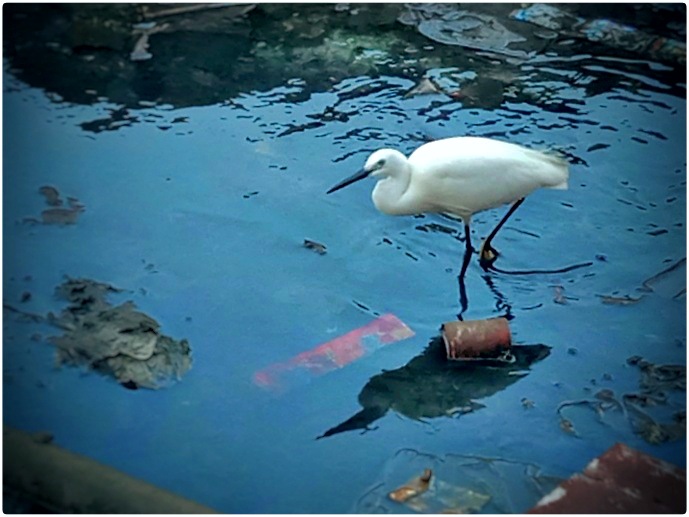

In general, it was detected that these water birds or often referred to as small egrets, were physically seen as having an adult body posture between 55-56 cm, a common size and in accordance with the state of their posture. While reviews of experts say that, the wingspan of an adult egret ranges from 88-105 cm. This feathered friend is a type of water bird that mostly lives and dominates water areas or wetlands, as seen in our area.
In our area often seen in wetlands such as :
- Swamps
- Rice fields
- Salt water estuaries
- Wet land such as small fish ponds with trees that are able to adapt to salt water
Here specifically in our area, coincidentally a watery location or wet land overgrown with mangrove trees, is a location that is often used as a nesting area.
Three months ago they were seen in large numbers, but all were lost due to a character constantly moving from one location to another.
For 3 months the mangrove forest that grows in the salt water river, looks empty, no of them occupy and dominate this area.
However, today, they are seen again in small numbers, and today only seen a young egret looking for food in every location that often experiences high tides.
It seems that this little egret is nesting, and will start a new civilization, in one of the small 2 year old mangrove trees, perhaps its presence as the beginning of the opening of new land as a nesting location in our region.
In these 2 days, he often looks for food in the form of small fish and sometimes hunts shrimp in the muddy ground, his behavior is clearly visible in the muddy location, as shown in the picture. One of them observed a small fish in a muddy puddle, which was marked by a small splash of water, the result of the movement of a fish sitting still in a muddy puddle. His eye speed is very accurate in detecting small fish and his work is always successful in hunting and fish is also obtained from the speed of his strong beak thanks to his hard work.
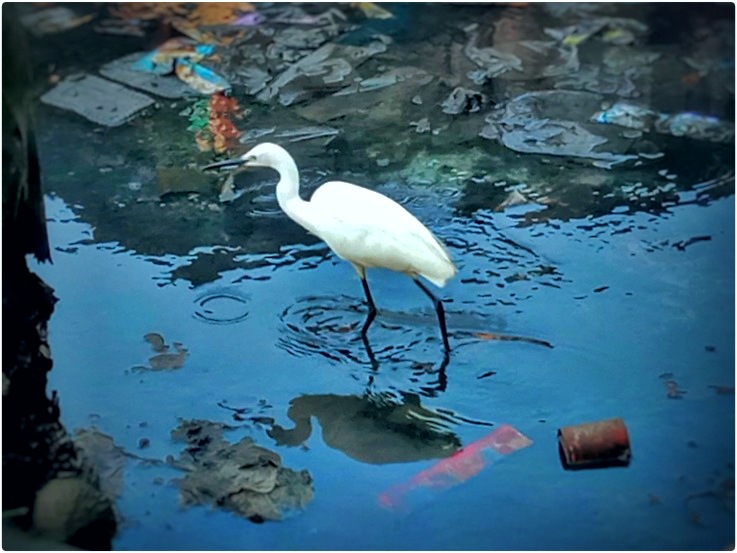
Seen from a distance, an egret, is observing things that are often done per day, namely monitoring the movement of small fish or shrimp hiding in the muddy ground.
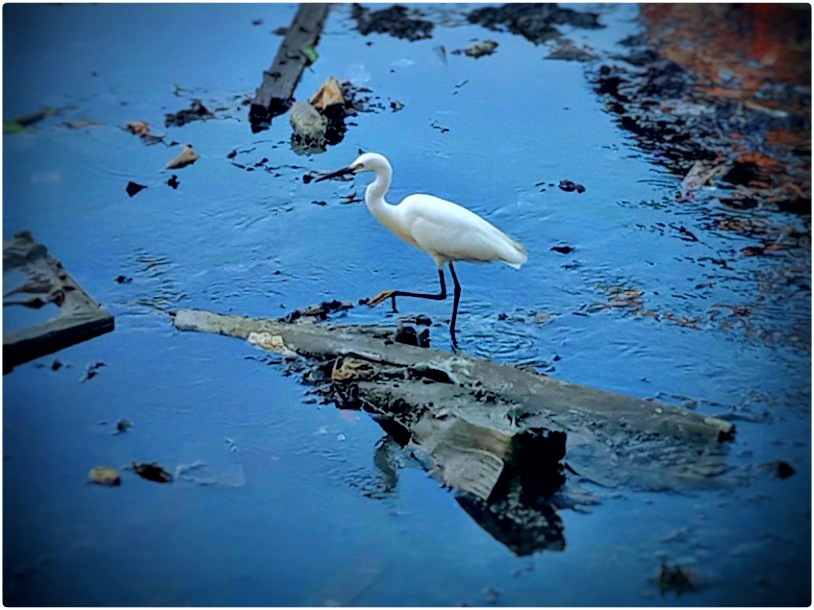
If every fish detects its presence, then automatically every fish will move away from proximity to the egret, the same thing will still be done in conducting a monitoring.
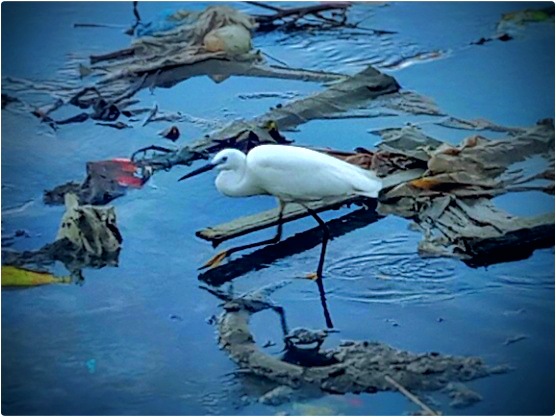
The shortened s-shaped neck is characteristic of the crane as it monitors every movement that hides in the water. Sometimes the image of his body in the water is detected by the fish, then the fish spontaneously move in muddy puddles as a camouflage action.
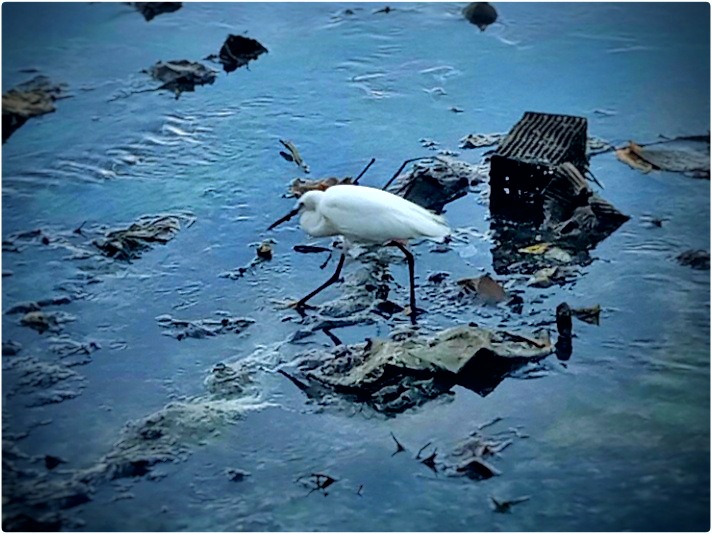
although its presence is known to every small fish however, the egret never gives up when it is hunting, it still comes back when its intestines are empty. This observation behavior is always repeated in places where there are a lot of fish, of course with a goal to always get the small fish or shrimp they see.
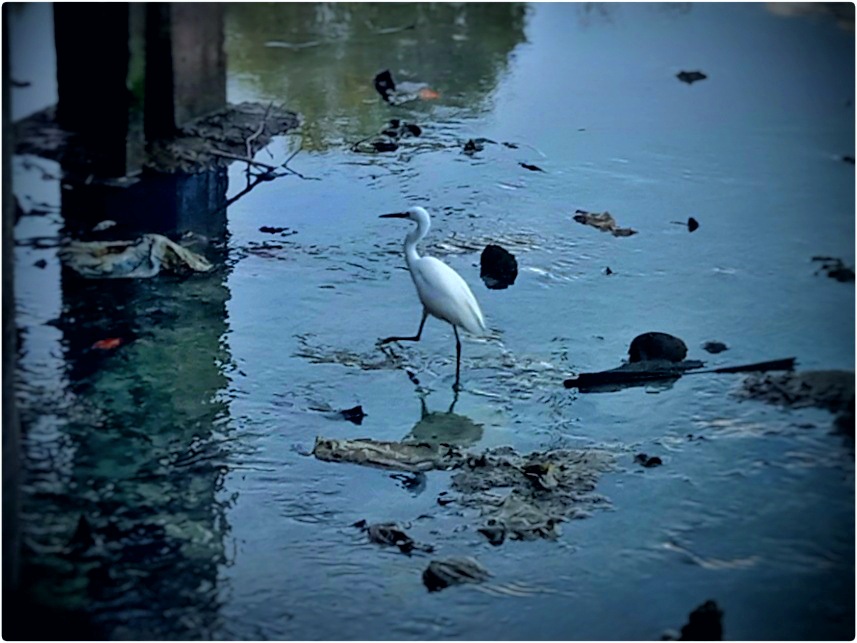
Each egret is able to survive in that area for hours, although it often gets fish in its hunt but its stomach is never full. This is due to the performance of his intestines which is very fast in dissolving the food he swallows quickly. So it is not surprising that when he puts food in his mouth, the najis or feces come out together.
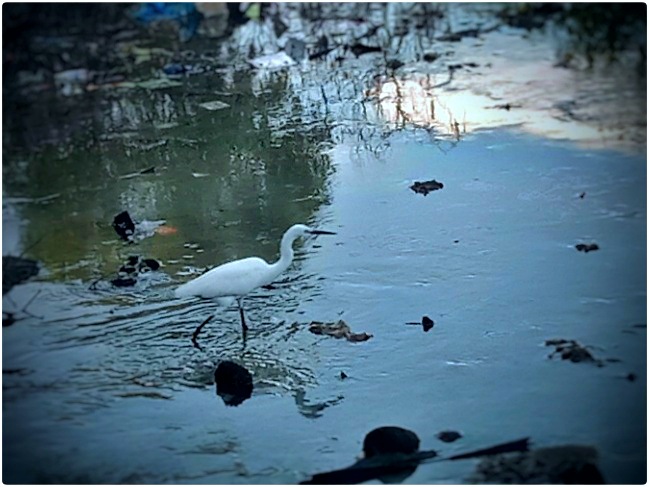
If it's like that above, then here we always give a new character nickname for him, namely the eater who is never full. This is often seen when approaching the area or location of the hunt, it will see its unclean feces pooled in puddles that are slightly white in color.
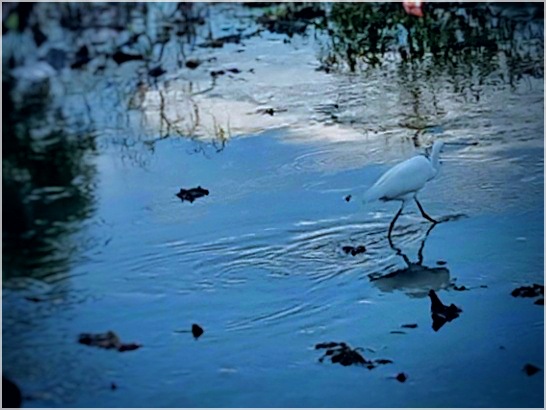
In accordance with the color of his body from the outside or every part of his body is white, then that is the color of his feces. However, his presence here has never interfered with the residents' activities, even though the location of the nest is close to 100 meters from people's homes.
Incidentally, every resident's house was also built on the land, in the form of a house on stilts, while on the east side there were mangrove trees that dominated the same land.
They are still here, although in every season they will make massive immigration to an area, like last year to be exact in 2020, that year saw them in large numbers or in the thousands. Although in mid-2021, they will disappear, of course doing a common mission in the form of a character that they have and today they are seen again in a few numbers, or around tens, I myself do not know where they came from, which is clear in two days here they come back, as the beginning of reproduction.

𝔗𝔴𝔢𝔱𝔱𝔢𝔯

𝔉𝔞𝔠𝔢𝔟𝔬𝔬𝔨

𝔏𝔦𝔫𝔨𝔢𝔡𝔩𝔫

The rewards earned on this comment will go directly to the person sharing the post on Twitter as long as they are registered with @poshtoken. Sign up at https://hiveposh.com.
👍Good photos of this heron.
Thank you so much @ratel